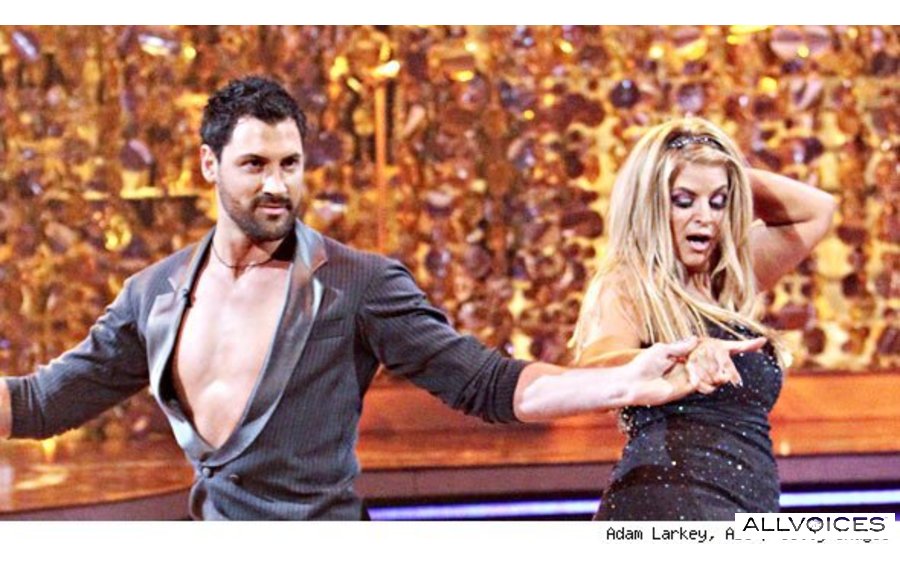Kirstie Alley falls for her partner on Dancing with the Stars

Last night on Dancing with the Stars contestants were to tell a “personal story” with their dance. Kirstie Alley and professional partner Maksim Chmerkovskiy were dancing to Somewhere Over the Rainbow when, shortly after starting, Maks fell, dropping Kirstie. Afterwards he seemed to be in pain, although he and Kirstie finished the dance. He said it was his fault, and that his thigh “just gave out”.
Despite the fall, the judges praised the pair and gave them a score of 21- higher than their score for last week’s quickstep. Today Maks apologized to Kirstie on Twitter:
“To all the fans…I’m sorry! It will never happen again and I will never ‘fall’! To @kirstiealley You were..FLAWLESS! In more ways than one!”
Her reply? “I salute u… U r a gladiator …. A champion… I’m honored to be your partner.”
The thigh has three main sets of muscles: the hamstring muscles in the back of the thigh, the quadriceps muscles in the front, and the adductor muscles on the inside. The quadriceps muscles and hamstring muscles work together to straighten (extend) and bend (flex) the leg. The adductor muscles pull the legs together.
 The quadriceps femoris, or quads, is a large muscle group that includes the four prevailing muscles on the front of the thigh.It is the strongest and leanest muscle in the human body.
The quadriceps femoris, or quads, is a large muscle group that includes the four prevailing muscles on the front of the thigh.It is the strongest and leanest muscle in the human body.
It is subdivided into four separate portions or ‘heads’, which have received distinctive names:
Rectus femoris occupies the middle of the thigh, covering most of the other three quadriceps muscles. It originates on the ileum- the main part of the pelvic. It is named from its straight course.
The other three lie deep to the rectus femoris and originate from the body of the femur, or thigh bone, and run the entire length of the bone:
Vastus lateralis is on the lateral side of the femur (i.e. on the outer side of the thigh).
Vastus medialis is on the medial side of the femur (i.e. on the inner part thigh).
Vastus intermedius lies between vastus lateralis and vastus medialis on the front of the femur (i.e. on the top or front of the thigh), but deep to the rectus femoris. Typically, it cannot be seen without dissection of the rectus femoris.
All four parts of the quadriceps muscle attach to the knee cap (patella) via the quadriceps tendon.
A strain comes from an injury to a muscle or tendon (the thick fibrous band that attaches a muscle to a bone). It comes after a quick tear, twist or pull of a muscle caused by over contraction or stretching. Pain, weakness, or muscle twitching are frequent symptoms of strains. A sprain is an injury to the ligaments ( thick bands of cartilage that connects bone to bone) caused by a fall or outside force that pulls the surrounding joint beyond its normal range of movement. The degree of sprain can range from a stretched ligament to a completely torn ligament. Symptoms include pain with movement, swelling, bruising, and joint instability. Mild injuries of either type are treated with RICE therapy- rest, ice, compression, and elevation. More severe injuries may require immobilization or possibly surgery to restore function.



























0 comments